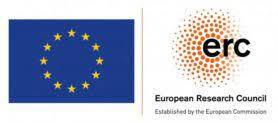by Amy Lazell and Laetitia Bornscheuer
In July 2021, N-EXTLAW hosted an online workshop on Participatory Action Research, ‘Understanding, applying and experiencing Participatory Action Research (PAR): A cross-disciplinary conversation’.
This blog post reflects upon the presentations given in this workshop and the key comments and discussions which arose out of them. It will first provide a brief overview of PAR and why this methodology has been adopted within the N-EXTLAW project, followed by an outline of the workshop’s goals and participants. Each of the two panels will then be considered individually, with a final comment on the overall reflections and N-EXTLAW’s future plans for collaboration.
PAR as a Methodology & N-EXTLAW’s Workshop Goals:
PAR is a research methodology which comprises three different elements: active bottom-up collaboration between researchers and the communities targeted by the research (Participation), knowledge production (Research), and use of this knowledge to generate actual change (Action).
N-EXTLAW uses PAR as we believe it is a non-extractive form of research, in line with our project’s theoretical grounding. Unlike other social science research methods, PAR does not have a strictly set research question, design or agenda. It is a genuinely collective process of investigating (and ultimately trying to address) a particular problem with the community that is affected by it. Although this enables PAR to be a very rewarding methodology – generating knowledge and creating social change (Action) which can help improve people’s lives – it also presents several challenges in the planning and practical application of the method.
In our workshop, we gathered together several scholars and practitioners applying PAR approaches in different disciplines. The goal was to learn more about PAR’s benefits and challenges and explore how the approach applies across varying regional contexts and types of inquiry. Six presentations were given in total, with representatives from the University of Cincinnati, the University of Amsterdam, Delft University of Technology, the International Institute for Environment and Development (IIED), Centro Universitário Fundação Santo André and Space&Matter, an architecture, urban planning and concept development company.
Panel 1: Community-Based Timelines & Socially Reflective Participation
The first panel consisted of discussions by Kristin Kalsem and Emily Houh (University of Cincinnati) on their approaches and experiences in previous projects such as judicial education, intimate partner abuse and predatory lending, and on PAR in relation to critical race and feminist theory. N-EXTLAW’s Vladimir Bogoeski and Nena van der Horst (University of Amsterdam) explored the role of PAR within the N-EXTLAW project itself and its relation to ethnography. And Joris Hoekstra (Delft University of Technology), presented the use of PAR within the H2020 UPLIFT Project – a project focused on policy co-creation for more sustainable youth policies – including the structure and organisation of their youth sessions and policy proposals.
Across all three presentations, questions and comments relating to the positionality of the researcher and the genuineness of a PAR and PAR-based approaches arose, as well as more practical questions on the structure of PAR research and the organisation of participatory communities. Key reflections included that within PAR a researcher does not have full control of their timeline or results, but must be open, flexible and regularly ask themselves what is the community getting out of this and what does the community themselves need or want to achieve?
In relation to other interests or methodologies, PAR was shown to have direct connections to critical race theory, feminist theory and ethnography, as a context-specific and bottom-up method aiming at including typically marginalised perspectives. This was both discussed directly and clearly exemplified by the wide range of topics, communities and contexts PAR was applied to across all three projects, including vulnerable abuse victims, unempowered youths and non-extractive, sustainable economic actors. All three presentations clearly demonstrated how PAR is able to connect with and reflect these social realities through participation.
Panel 2: Empowerment & Bottom-up Solutions
The second panel started with a presentation by Lorenzo Cotula (IIED) who shared his experiences on the use of PAR during several projects in different regional contexts in the Global South. A central theme in his presentation was the notion of empowerment and how PAR can help create action which supports marginalized groups in their efforts to advocate for their rights. Alice Haugh (Space&Matter) introduced a “neighbourhood for seven generations”, explaining how a community land trust model can ensure that land stays habitable in the long term. In this context, PAR research is a means to closely work together with communities to enable and support the sustainable use of their pieces of land for current and future generations. Angela Martins Baeder (fmr. Centro Universitário Fundação Santo André) used PAR in a study on the work and occupational health hazards of cooperative recyclers in the greater metropolitan area of São Paulo. During this study, knowledge about health hazards was generated collectively among workers from different cooperatives to find workable solutions.
These presentations have shown that an essential aspect of PAR is that it can empower communities to bring about effective change. PAR can help contribute to a sustainable change in power structures, driven by the affected communities themselves. For example, during the collaboration with Angela Martins Baeder, the cooperative recyclers of São Paulo owned the process of producing the knowledge and the solutions to address the health hazards they were facing every day. They are now advocating for better health protection in their profession.
An interesting insight regarding the role of law in PAR studies was that empowerment can also refer to legal structures. Individuals and communities will not always be aware of the different rights they are already accorded by the law. Insofar, PAR can help foster legal literacy to enable and encourage the assertion of existing rights. An interesting example mentioned by Lorenzo Cotula are so-called paralegals. Paralegals are community members who have received a certain amount of legal training to legally support other community members. Doing so, they also take action and find themselves in a position where they can participate in the collective knowledge creation by sharing and reflecting on their experiences – two important aspects of PAR research.
In addition, the bottom-up approach of PAR enables researchers to find answers that are not detached from the reality of the collaborating communities. Instead, PAR is focused on the generation of workable solutions that address the actual needs of people. This was also nicely illustrated by the presentation of Alice Haugh. Space&Matter worked together with the Community Land Trust H-Buurt in Bijlmer, Amsterdam to make their land usable in the long-term. Doing so, the initiative defined together with the community what a neighbourhood for seven generations would look like for them. Similarly, it has made use of assets that were already in the community and elevated them, rather than fundamentally reshaping the community in a top-down approach. Therefore, PAR proves to be a methodology that allows us to take into account what is meaningful to the communities that researchers work with.
Overall Reflections & Looking Forwards:
Understanding PAR in the context of other projects enables us to learn from each other’s experiences and further develop N-EXTLAW’s own individual approach to PAR. Despite the diverse areas of research and widely varying focuses of all six projects, characteristics of PAR were very clearly reflected across all six presentations – exemplifying the wide application and translatability of the founding elements of PAR (Participation, Action & Research). N-EXTLAW hopes that this workshop will mark the start of a longer exchange between those involved – with discussions already taking place on future meetings and a collaborative blog thread.
N-EXTLAW would like to thank all participating researchers for their insightful presentations and discussions and we greatly look forward to further collaborating in the future.
Amy Lazell and Laetitia Bornscheuer are LLM students at the University of Amsterdam and student researchers with the N-EXTLAW Project as part of the Academic Excellence Track (AcET).



